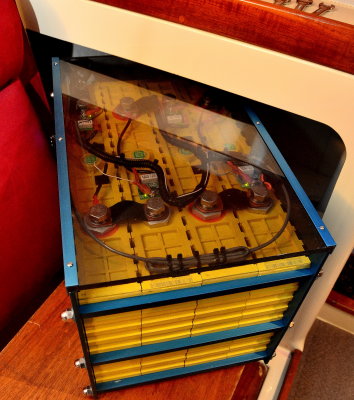Look this is the last time I am going to repeat myself for the 3rd time. You need to get your head wrapped around LFP is very low internal resistance. Back again to a single 100 AH cell has an Ri= .0009 Ohms
Pick any charge rate you want from no current to 33 amps or C/3.
Lets start with 1 amp. 1 amp x .0009 ohms = .0009 volts. We stop charging at some voltage like 3.5 (95% SOC) At that point the actual cell terminal voltage is 3.4991 volts. Close enough to 95% in my book.
Now let's go up to 30 amps x .0009 volt = .027 volts. We stop at 3.5 volts gives a cell terminal voltage of 3.473 volts or roughly 93% SOC
Can I make it any more clear to you?
There is only one safe way to charge a LFP to 100% SOC. That is with a CV continuous voltage of 3.65 volt until the charge current tapers off to .05 C. That would be 5 amps on a 100 AH cell. There is no possible way to over charge a LFP cell when charging at less than 1C if you terminate below 3.65 vpc. That is it, I am done. The rest is on your own.
Pick any charge rate you want from no current to 33 amps or C/3.
Lets start with 1 amp. 1 amp x .0009 ohms = .0009 volts. We stop charging at some voltage like 3.5 (95% SOC) At that point the actual cell terminal voltage is 3.4991 volts. Close enough to 95% in my book.
Now let's go up to 30 amps x .0009 volt = .027 volts. We stop at 3.5 volts gives a cell terminal voltage of 3.473 volts or roughly 93% SOC
Can I make it any more clear to you?
There is only one safe way to charge a LFP to 100% SOC. That is with a CV continuous voltage of 3.65 volt until the charge current tapers off to .05 C. That would be 5 amps on a 100 AH cell. There is no possible way to over charge a LFP cell when charging at less than 1C if you terminate below 3.65 vpc. That is it, I am done. The rest is on your own.

Comment